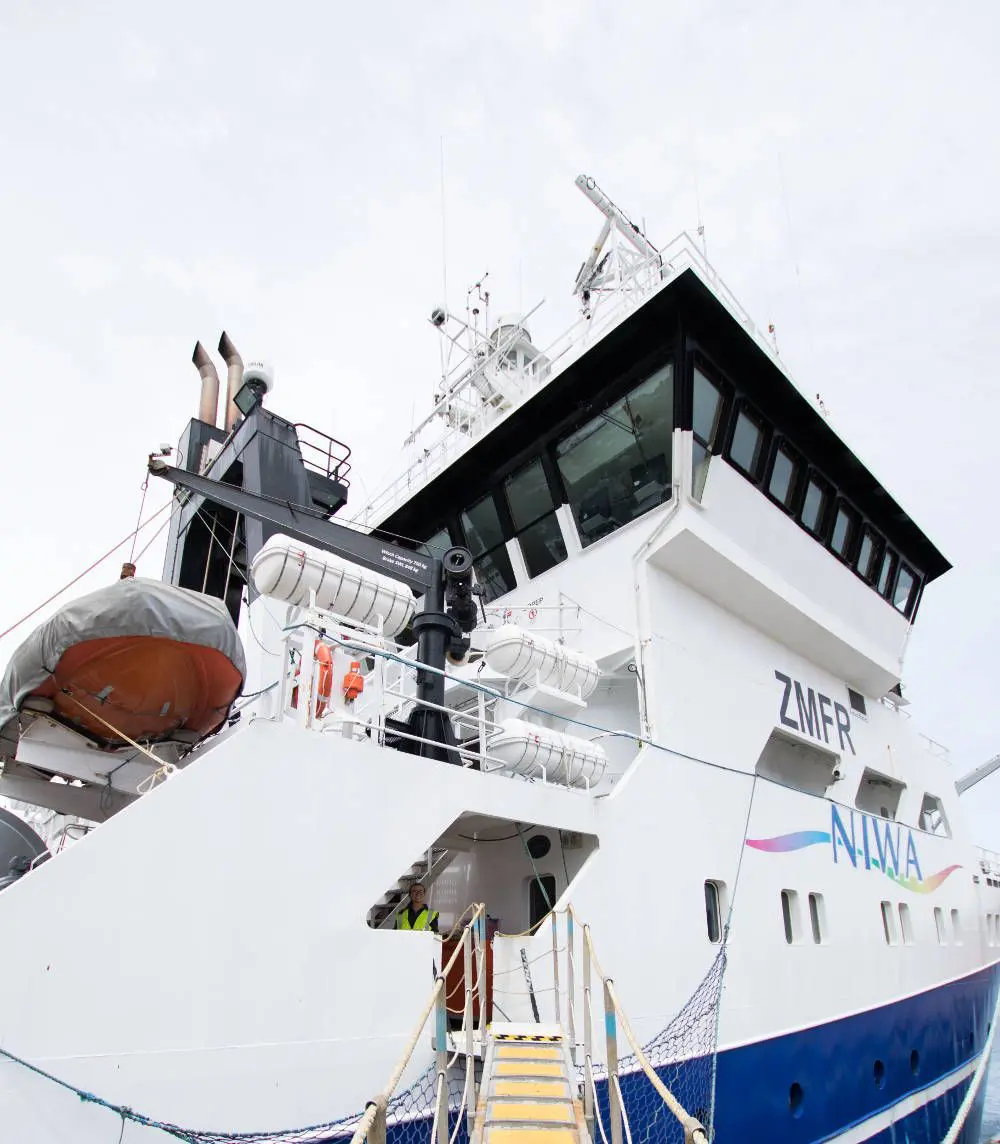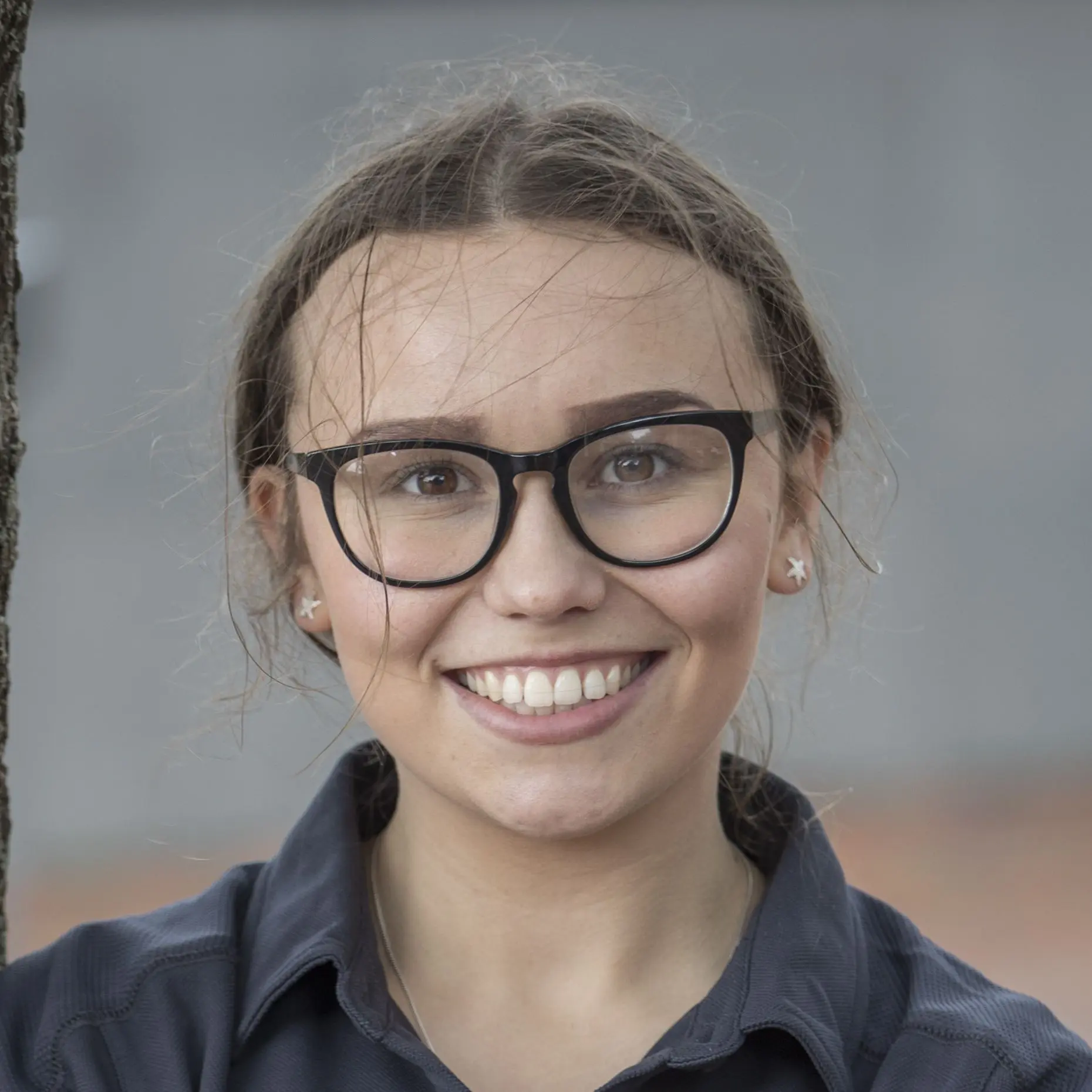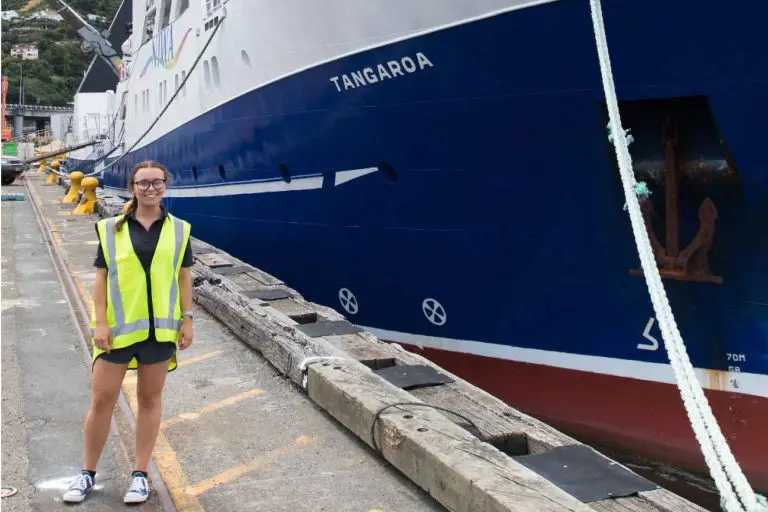Welcome aboard the Tangaroa, ‘The God of the sea’, a fisheries research vessel purpose-built in 1991 for NIWA, also used for oceanographic surveying, seafloor mapping, and other marine research. We (Tory and Toby) will be spending the next 4 weeks aboard this vessel, headed off to the Chatham Rise where our main purpose is to survey the hoki stocks, New Zealand’s biggest fishery.
The 2018 survey will be the 25th survey in the Chatham Rise trawl time series using RV Tangaroa. Surveys were carried out annually from 1992–2014, and biennially since. This is the most comprehensive time series of species abundance at water depths of 200 to 800 m in New Zealand’s 200-mile Exclusive Economic Zone.
Chatham Rise surveys provide relative biomass estimates of adult and juvenile hoki. Hoki is New Zealand’s largest finfish fishery, with a current catch limit of 150 000 t. Hoki is assessed as two stocks, western and eastern. The current hypothesis is that juveniles from both stocks mix on the Chatham Rise and recruit to their respective stocks as they approach sexual maturity. The Chatham Rise is also the principal residence area for the hoki that spawn in Cook Strait and off the east coast South Island in winter (eastern stock). Annual catches of hoki on the Chatham Rise peaked at over 75 000 t in 1997–98 and 1998–99, then decreased to a low of 30 700 t in 2004–05, before increasing again from 2008–09 to 2011–12. The catch from the Chatham Rise in 2013–14 was 33 800 t, making this the second largest hoki fishery in the EEZ (behind the west coast South Island), and contributing about 23% of the total New Zealand hoki catch. To manage the hoki fishery and minimise potential risks, it is important to have some predictive ability concerning recruitment into the fishery. Extensive sampling throughout the EEZ has shown that the Chatham Rise is the main nursery ground for hoki aged 2 to 4 years. Abundance estimation of 2+ hoki on the Chatham Rise provides the best index of potential recruitment to the adult fisheries. The continuation of the time series of trawl surveys on the Chatham Rise is therefore a high priority to provide information required to update the assessment of hoki.

Other middle depth species are also monitored by this survey time series. These include important commercial species such as hake and ling, as well as a wide range of non-commercial fish and invertebrate species. For most of these species, the trawl survey is the only fisheries-independent estimate of abundance on the Chatham Rise, and the survey time-series fulfils an important “ecosystem monitoring” role, as well as providing inputs into single-species stock assessment.
In 2010, the Chatham Rise survey was extended to deeper waters (to 1300 m) on the north and southeast Rise, to provide fishery independent relative abundance indices for a wider range of species, including pre-recruit (20–30 cm) and dispersed adult orange roughy, black oreo and smooth oreo, and some common bycatch such as deepwater sharks, as well as providing improved information for species like ribaldo and pale ghost shark, which are known to occur deeper than the core survey maximum depth of 800 m. The 2018 survey will cover depths of 800–1300 m around the whole Chatham Rise.

Victoria Carrington
BLAKE NIWA Ambassador 2017


